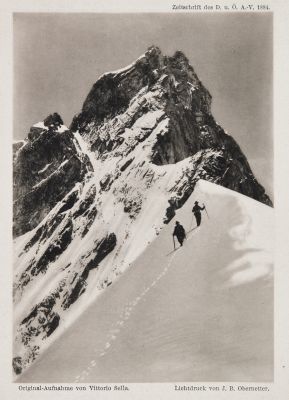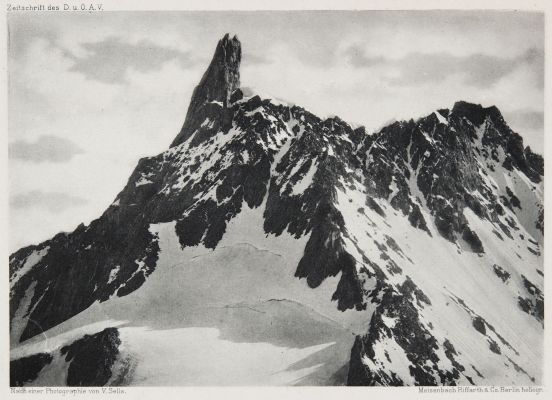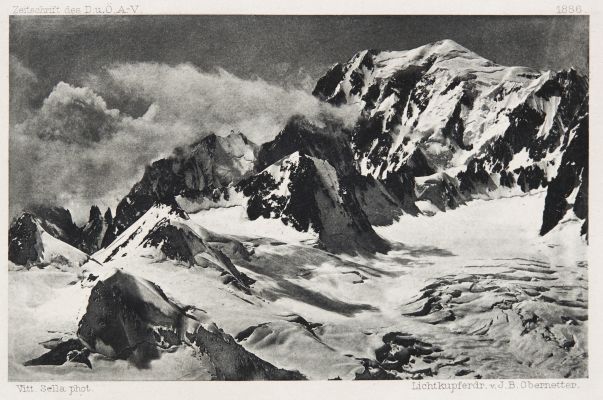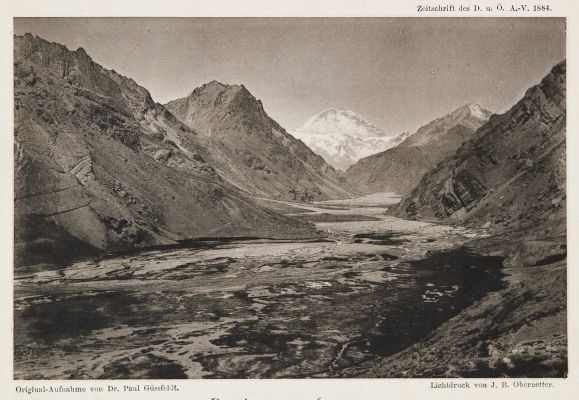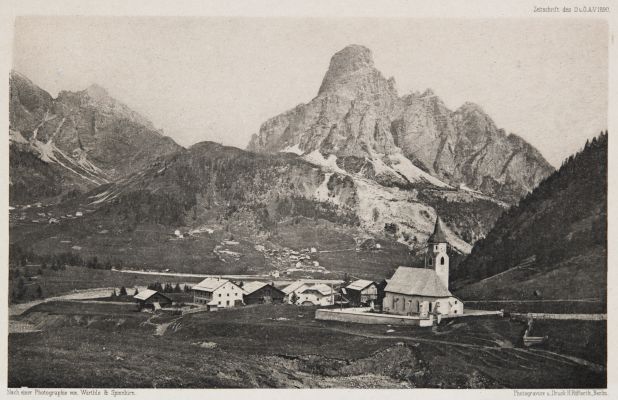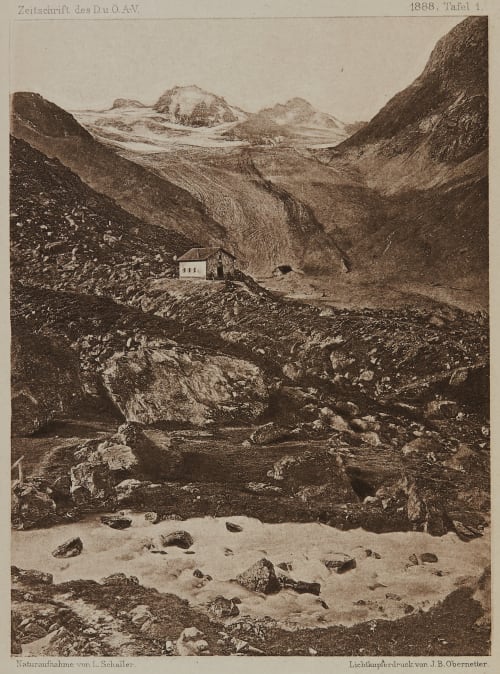
Title
Die Jamthal-HütteArtist
Schaller, Ludwig (German, 1860-1924)Publication
Zeitschrift Des Deutschen Und Österreichischen AlpenvereinsDate
1888Process
Photogravure (Lichtkupferdruck)Atelier
ObernetterImage Size
13.7 x 10.3 cm
This periodical offers as example a range of photomechanical process’ available over the course of its publication. Of particular interest are the lichtkupferdruck (photogravures) by Obernetter in the process he described in 1886. His use of this process is uncommon. Many of the photographs are by Vittorio Sella.
Lichtkupferdruck (1883) was a method where a positive is first produced on a film of gelatino-bromide of silver, very rich in the silver salt. The silver of the developed and fixed image is then converted into silver chloride by the action of a mixture of perchloride of iron and chromic acid. The film is then stripped and applied to the surface of a copper plate, and, under the influence of a voltaic current, the silver chloride is decomposed, and the chlorine unites with the copper and etches it to a greater or less degree, according to the depth of deposit of silver chloride. The result is a grained intaglio plate of extreme delicacy and beauty, which is inked and printed from the same as any other intaglio plate. [1] Obernetter’s Collotype patent was purchased in the US by a group in 1878 and named “Artotype.” Licenses were sold to a number of individuals, however the major users were Edward Bierstadt and a group of small companies in Gardner, Massachusetts using the names “Lithotype and Autoglyph.” The plates from these companies have a reticulation pattern more like standard collotype than Obernetter’s first prints. [2]
Reproduced / Exhibited
Hanson, David A. Checklist of Photomechanical Processes and Printing, 1825-1910. , 2017. p. 100.
References
[1] Wall, The Dictionary of Photography, 1902 pg. 473
[2] Burton W. K. 1887. Practical Guide to Photographic & Photomechanical Printing. London: Marion. Retrieved November 2 2022 (http://catalog.hathitrust.org/api/volumes/oclc/47134051.html).

